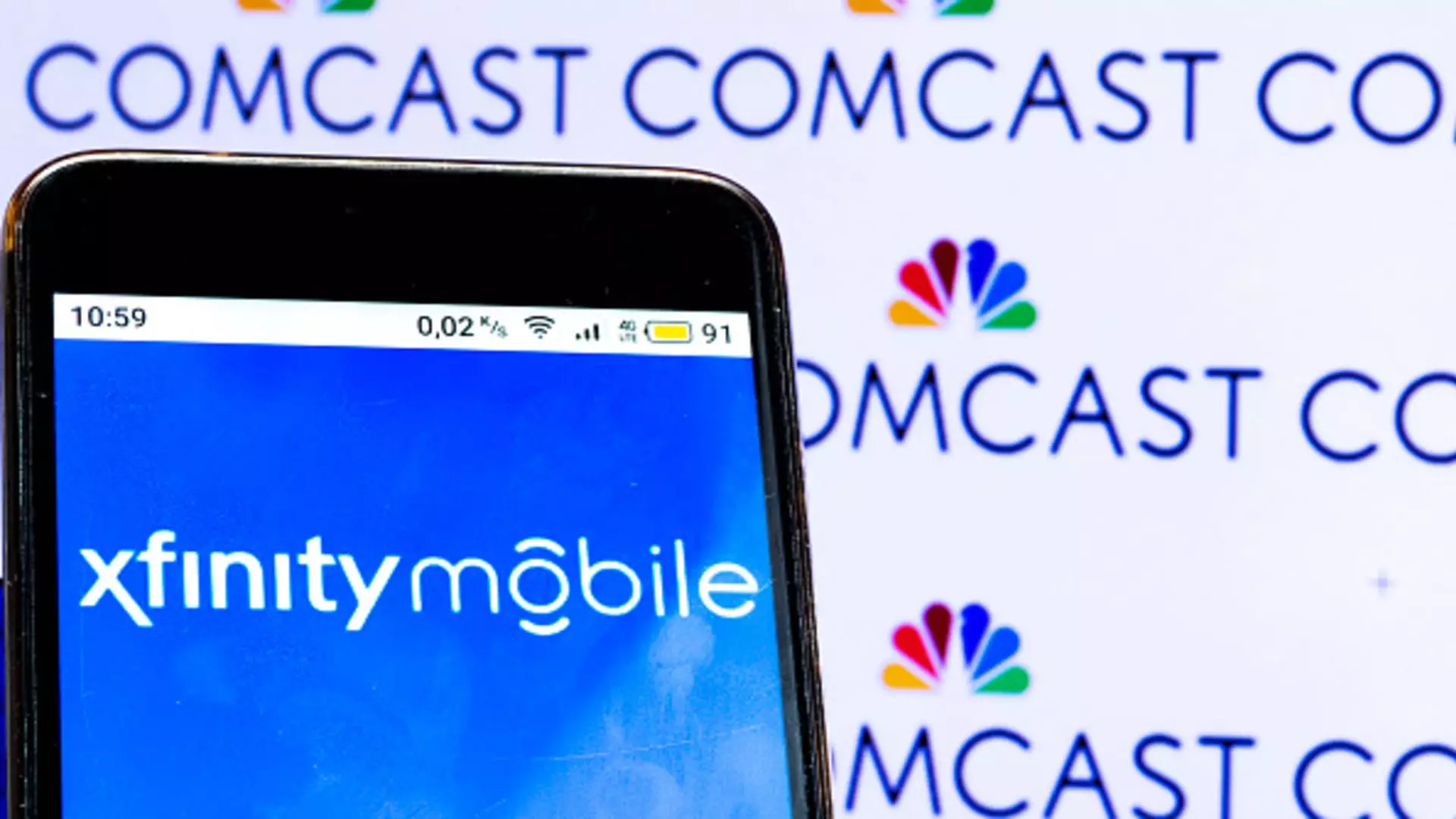The recent announcement regarding the Wells Fargo Center’s rebranding to the Xfinity Mobile Arena in Philadelphia is not merely a change of name, but a strategic power play by Comcast Spectacor and Harris Blitzer Sports & Entertainment (HBSE). This transformation, effective from September and lasting until at least the 2030-2031 season, is a bold maneuver to associate the thriving Xfinity Mobile brand with the rich sports culture of Philadelphia. By rerouting the discussions primarily into branding through sports, Comcast is making a definitive statement about its direction amidst the tech-savvy and fiercely competitive landscape of telecommunications.
The venue, which has served as the battleground for both the NBA’s 76ers and the NHL’s Flyers, has seen renovations and investments to keep it competitive in the changing entertainment ecosystem. Yet, the move to Xfinity Mobile isn’t simply cosmetic; it represents a quest for relevance in an era where consumer loyalty is fleeting and competition is ruthless.
Xfinity Mobile: Growing from Utility to Popularity
Comcast’s decision to pivot towards Xfinity Mobile follows its ongoing struggle for broadband customer growth. Traditionally, it viewed mobile as a mere retention tool for broadband customers; however, it’s become evident that it has the potential to be a cornerstone of the company’s revenue strategy. With an additional 323,000 mobile lines reported in just one quarter, the timing couldn’t be more opportune to leverage this momentum through strategic branding linked to sports—a cornerstone of American culture.
In essence, this rebranding aligns with a broader trend where brands seek to establish emotional connections with consumers. Philadelphia fans are known for their passion and loyalty, traits that Xfinity Mobile undoubtedly wishes to inherit through its association with the arena. By drawing fans away from longstanding brands like AT&T and Verizon, Comcast’s bold move may serve as a catalyst for wider market acceptance and brand loyalty.
Sports as a Strategic Battleground for Brand Wars
By associating Xfinity with a prominent sports venue, Comcast is engaging in a brand war that uses sports as a battlefield. Sports teams and venues have long served as valuable advertising real estate, but Comcast’s gamble here showcases its desire to shift public perception from simply being a cable provider to a comprehensive lifestyle brand. The engagement of customers through in-arena experiences—like seamless Wi-Fi connections for Xfinity Mobile users during games—reinforces the utility of the product while enhancing the overall brand experience.
However, the unspoken risk is high. If fans aren’t impressed with the upgrades or if the mobile services do not meet expectations, Comcast risks not only sinking money into a rebranding initiative but also tarnishing its name in a city where loyalty can quickly turn to derision—as any Philadelphia sports fan will tell you. The arena stands as a direct reflection of Comcast’s ability to deliver on its promises, both in service and in creating memorable experiences for its patrons.
The Bigger Picture: Technology in Entertainment
This restructuring reflects a larger narrative where technology and entertainment converge. The arena’s upgrades and new infrastructure promise an enhanced fan experience while also aligning with the expectations of a generation that thrives on connectivity and engagement. With streaming, mobile viewing, and real-time interactions becoming commonplace, Comcast’s challenge is not just to keep pace but to outpace competitors who also aim to integrate technology with entertainment.
Comcast’s foresight in tutoring their branding strategy towards a growing mobile base suggests an acknowledgment that the future lies in a hybrid model amalgamating communication, entertainment, and high-quality service. This is where center-right liberal ideologies may resonate: prioritizing corporate growth while acknowledging and addressing the consumer needs through innovative solutions.
In a digitized world where consumers demand more than the bare minimum, Comcast’s brave branding initiative could just be the beginning of a transformative approach that other companies will be forced to consider. Whether it leads to triumph or backlash is yet to unfold, but one thing is certain: in this heated battle for market share, consumer experience will dictate the victor.

